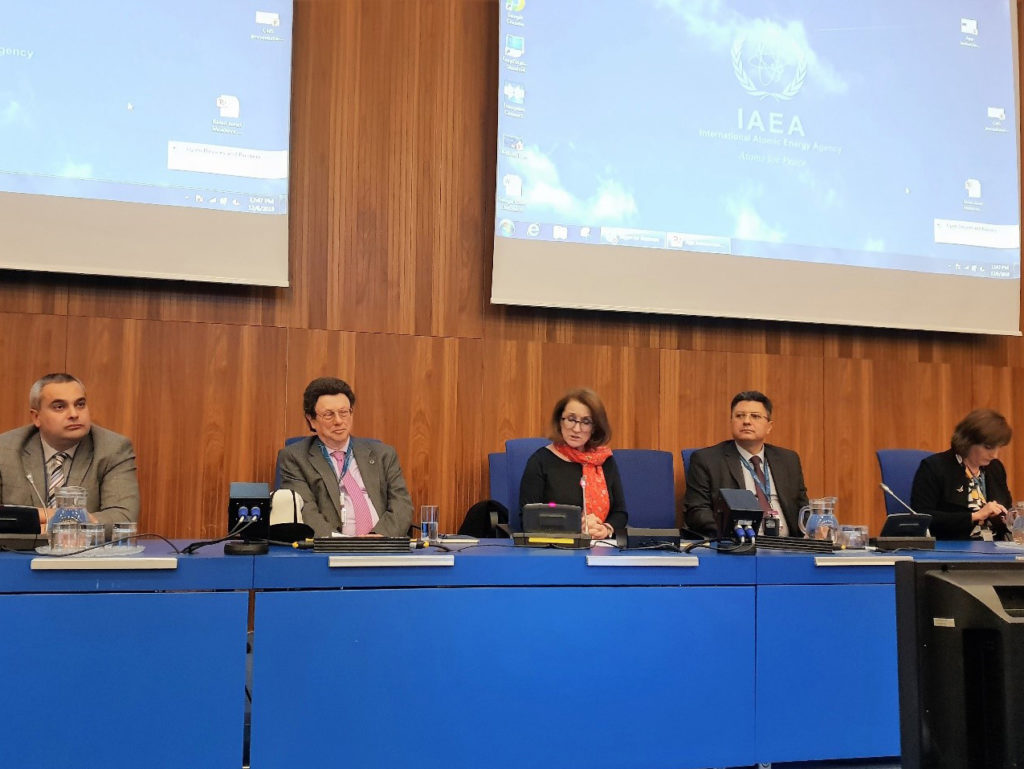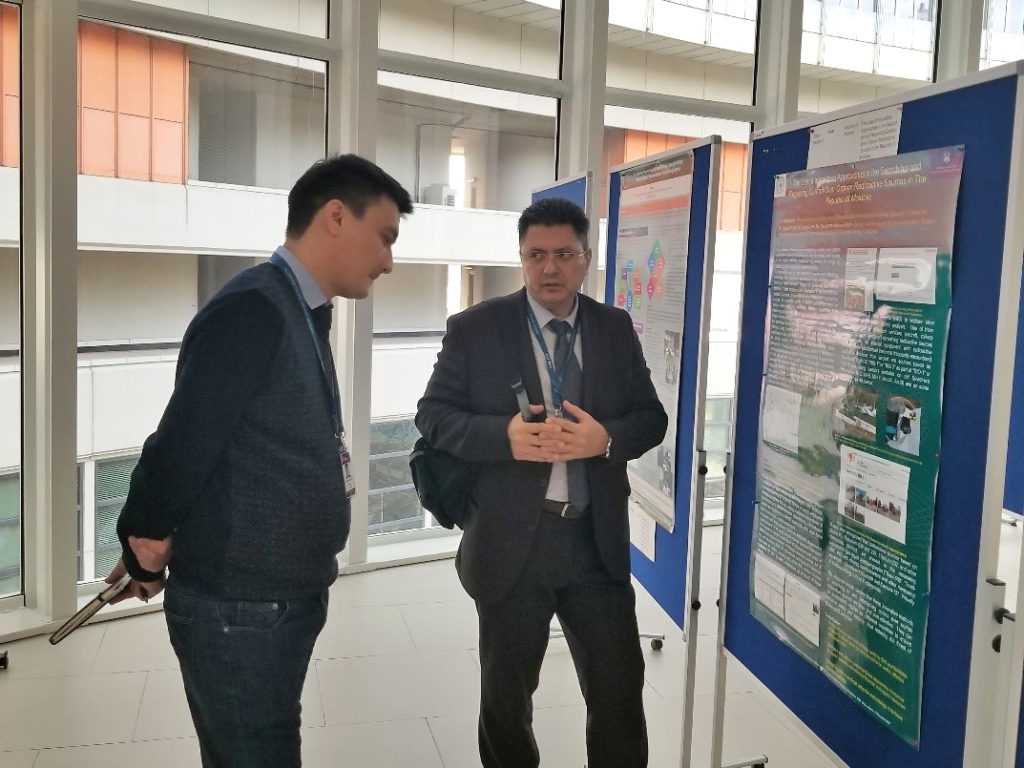January 10, 2019
Margarita Kalinina-Pohl
At the International Atomic Energy Agency’s International Conference on the Security of Radioactive Material: The Way Forward for Prevention and Detection held in December of 2018, CNS sponsored an expert panel on “Innovative Approaches to Locating Orphan Radioactive Sources.” The purpose of this event was to inform relevant national regulatory bodies and other stakeholders—particularly from developing countries—about an innovative methodology CNS developed to help governments locate and recover orphan radioactive sources. Inspired by the success of a project it launched in Moldova in 2016, CNS initiated a similar one in the Republic of Georgia in 2017 and introduced the methodology to Kyrgyzstan and Uzbekistan in 2018.

Participants at the CNS side event (left to right): Nodar Nadirashviliv (ANRS, Georgia), Bill Potter, Laura Rockwood (VCDNP), Ionel Balan (NARNA, Moldova), Margarita Kalinina-Pohl
Moderated by Vienna Center for Disarmament and Non-Proliferation Executive Director Laura Rockwood, the panel featured presentations by CNS Director Bill Potter, Senior Program Manager Margarita Kalinina-Pohl, and representatives of Moldova and Georgia. In his overview of the project, Dr. Potter described how it aims to help government authorities of Moldova and Georgia track down orphaned and Soviet-era legacy sources. The project employs a methodology that combines new techniques—such as network analysis of former and current facilities and employees, targeted social media searches, and online surveys—with traditional administrative methods, such as examining historical records and interviews of former and current employees. In the first test of the methodology, undertaken with the Moldovan National Agency for Regulation of Nuclear and Radiological Activities (NARNRA), the project helped recover a considerable quantity of unaccounted radioactive sources.
Following Dr. Potter’s overview, Moldovan and Georgian representatives discussed the project’s implementation in their respective countries. NARNRA Deputy Director Ionel Balan presented a comprehensive review of how this methodology aided the radioactive sources’ search and recovery efforts in Moldova. He relayed the step-by-step implementation, results, and future use of this methodology.

Ionel Balan shares his experience with a conference participant from Uzbekistan
Margarita Kalinina-Pohl shared her experience working with the Republic of Georgia’s Agency of Nuclear and Radiation Safety (ANRS) in introducing and implementing the initial stages of the project in Georgia. Mr. Nodar Nodirashvili, head of the ANRS Authorization Service, supplemented Ms. Kalinina-Pohl’s comments by describing practical steps his agency took to apply the methodology in tracking down radioactive sources. The project in Georgia is still in its initial stage, but with the help of CNS, ANRS now has a database of over 700 individuals who may have potential knowledge about possible locations of orphan or legacy sources.
Over 40 conference participants attended the panel, including representatives from the Nuclear Threat Initiative, US national laboratories, and various national delegations, including those from Kazakhstan, Kyrgyzstan, and Uzbekistan.
The IAEA conference was a great opportunity for CNS to raise awareness and share information and experience with a diverse audience of policy makers, nuclear regulators, and other nuclear stakeholders on how new tools and technologies can help governments locate and recover orphan radioactive sources, thereby enhancing global radiological security.
The CNS team responsible for this project hopes that other governments whose representatives attended the event will take note of this methodology and consider combining it with other established administrative methods used to locate unaccounted radioactive sources.
